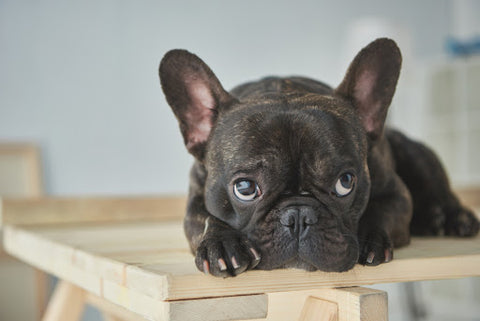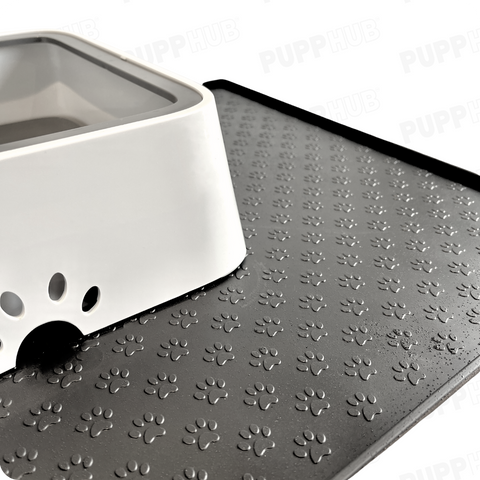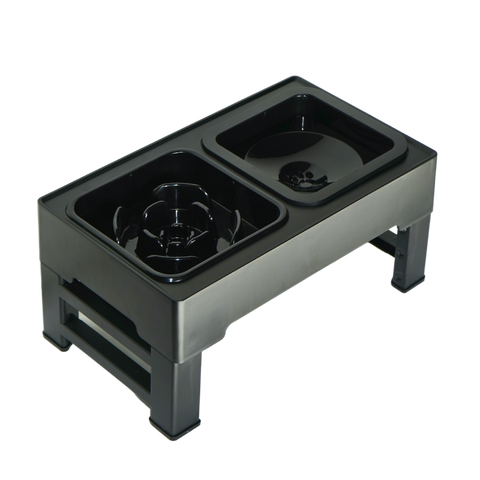Flat-faced breeds, or brachycephalic dogs, include cute companions like Bulldogs, Pugs, Shih Tzus, and many more. These charming dogs are loved for their distinctive looks and playful personalities. Distinctive features lead to particular needs associated with feeding and hydration. Finding the right bowl becomes highly important in ensuring ease, comfort, and safety for these lovely fur babies while eating and drinking. The article aims to lead you through the process of selecting the perfect bowl that will suit flat-faced dogs.
How Brachycephalic Dog's Face Shape Affects Its Eating
Brachycephalic breeds are characterized by an exceptionally short snout and wide face. That cute, shortened muzzle influences how these dogs interact with their feeding and water bowls. It may lead to choking hazards or aspiration- in the eating and drinking process (food or liquid is inhaled into the lungs). Hence, it's relevant to choose a design that would best fit their special needs.

Factors to Consider When Choosing a Bowl for Flat-Faced Dogs
Choosing the right bowl entails a number of considerations tailored to the unique needs of flat-faced dogs. Here are some key considerations:
1. Bowl Shape and Design
Generally speaking, shallow bowls are preferred, since they allow for easy access to food and water with minimum bending or stretching, which may lead to strain and frustration for the dog. Conversely, deep bowls may force the dog to dig down for their food, which can cause discomfort when eating. Bowls with wide-opening feature should also be considered, as they provide easy access for the larger facial structures of brachycephalic breeds. Such a wider bowl helps avoid spilling while providing comfort for the dog to eat without turning and twisting the neck in an uncomfortable position.
2. Material
Material also significantly influences the durability, hygiene, and safety aspect of bowls. Stainless steel ones are strong, resistant to bacteria, and quite fit for regular use. Ceramic bowls might be decorative, but they chip or break upon falling. Plastic bowls are lightweight and inexpensive, but once scratched, they can harbor bacteria.
3. Bowl Size
Smaller breeds deserve small bowls that will not require them to waste food by spilling it out, but neither would an overly large bowl overwhelm them while they eat. Let the depth and width be correct according to the size of your dog to avoid wastage of food and provide as much comfort as possible while eating. Smaller breeds deserve small bowls that will not let them to waste food. A bowl that is too large may overwhelm a smaller dog.
4. Anti-Slip Features
Flat-faced breeds may nudge the bowl around while eating or drinking, which could spill and make a mess. Anti-slip features keep the bowl in place, allowing your dog to focus on their meal without distractions. Look for bowls made with a rubber bottom or those coming with non-skid mats. These designs prevent slipping and sliding and will make mealtime more pleasant for both you and your dog.

Specialized Bowls for Flat-Faced Dogs
Apart from taking into account the usual features of a bowl, there are certain choices made especially for flat-faced dogs.
1. Tilted or Angled Bowls
Tilted bowls make it easier for flat-faced dogs to get their food and water since the angle allows gravity to assist them, so they can eat comfortably without straining their necks.
2. Slow Feeder Bowls
Slow feeders prevent dogs from 'wolfing' down their food in a rush. Inside these bowls, there are usually obstacles and ridges that encourage the dog to eat at a slower pace, which will be very helpful to avoid chocking or aspiration
3. Elevated Feeding Stations
Elevated feeding stations can help a lot for dogs that have joint problems or are older. These feeding stations minimize the neck and back strain with the elevated height, improving the posture when taking meals. Just make sure to change the height appropriately to suit your needs.

Choose the Right Dog Bowl for Your Flat-Faced Dog
The choice of the right dish for your flat-faced dog is crucial for its comfort and health. With appropriate analysis of shape, material, size, height, and special designs, you may ensure a pleasant eating experience for your puppies. Always monitor how your dog utilizes the bowl, and be prepared to make modifications as needed. Overall, putting forth a little effort to choose the right bowl can go a long way toward improving your dog's life and making mealtime more joyful!
